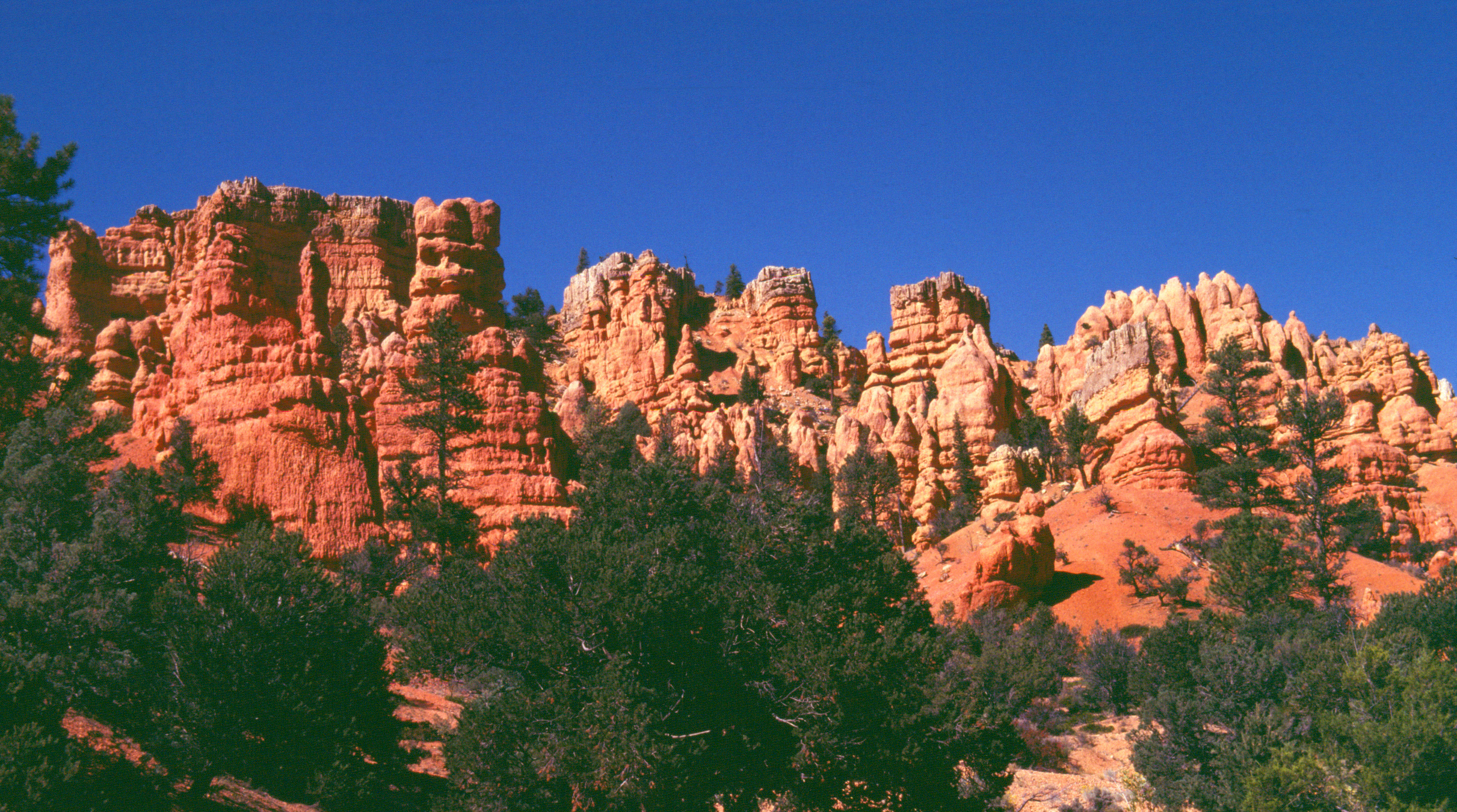Welcome to Red Canyon!

Photo courtesy of Wikimedia Commons
Red Canyon is a smaller version Bryce Canyon National Park, but
the rock formations and geology that formed each landscape are the
same. Here and at Bryce Canyon you will see many rock formations
called Hoodoos.
Hoodoos are tall thin spires of rock that
protrude from the bottom of arid basins and badlands. They are
composed of soft sedimentary rock and are topped by a piece of
harder, less easily-eroded stone that protects the column from the
elements. They are mainly located in the desert in dry, hot areas.
In common usage, the difference between hoodoos and pinnacles or
spires is that hoodoos have a variable thickness often described as
having a "totem pole-shaped body." A spire, on the other hand, has
a smoother profile or uniform thickness that tapers from the ground
upward. (Geology purists do note that only a tall formation should
be called a hoodoo; any other shape is called a 'hoodoo rock'.)
In addition to Red Canyon and other areas of the Colorado
Plateau, hoodoos are commonly found in the Badlands regions of the
Northern Great Plains (all in North America). While hoodoos are
scattered throughout these areas, nowhere in the world are they as
abundant as in the northern section of Bryce Canyon National Park.
WED Enterprises (now Walt Disney Imagineering) notably based the
design of the Disneyland version of the popular Big Thunder
Mountain Railroad around a series of hoodoos, although these were
constructed out of steel and concrete.
Hoodoos range in size from that of an average human to heights
exceeding a 10-story building. Formed in sedimentary rock, hoodoo
shapes are affected by the erosional patterns of alternating hard
and softer rock layers. Minerals deposited within different rock
types cause hoodoos to have different colors throughout their
height. (adapted from Wikipedia)
To log this visit, please email the answers that can be found on
the information plaque at the coordinates for the following
questions:
- Oxygen reacted with what type of deposits to turn the sediments
that form these rocks red?
- Where did the oxygen come from?
- Extra Credit: The hoodoos are composed of limestone. What test
could you do to determine if a rock sample could be limestone or
not?
- Scratch test
- Acid test
- Color test